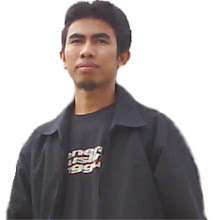10 February 2009
Detlef Günther talks to May Copsey about nanoanalytics, football and measuring the largest crystals in the world
 | Detlef Günther is professor for trace element and micro analysis at the Swiss Federal Institute of Technology Zurich and chair of the Journal of Analytical Atomic Spectrometry editorial board. His research focuses on fundamental and applied aspects of plasma-based mass spectrometry techniques, ion generation and ion extraction procedures and laser ablation-inductively coupled plasma-mass spectrometry for elemental and isotope analysis. |
What inspired you to become a chemist?
I grew up in a little village with a very small school. Our chemistry teacher was also the coach of our football team - so being good at chemistry helped me to get picked for the team. Later on, in high school, I had an excellent teacher who showed us experiments not normally allowed at school. We really had the smell and the taste of chemistry very early on in the classroom.
Did you always want to work in analytical chemistry?
To begin with I was much more interested in organic chemistry. Chemistry was a popular subject because my university (Martin Luther University Halle-Wittenberg) was very close to some of the major chemical companies in East Germany. We had two branches, synthetic chemistry and technical chemistry. However all the places had been filled for synthetic chemistry and I couldn't switch. I went on to pass the major exams in analytical chemistry and it was then I realised that if I couldn't synthesise something new, I might be able to analyse something. So that was the start.
What led you to choose a PhD in analytical chemistry?
Where I did my PhD was very special because we had one of the first inductively coupled plasma-optical emission systems (ICP-OES) in East Germany. That was fantastic because most of our colleagues at other universities had no access to this technology. My PhD supervisor, Professor Moenke, was well known in the field of laser ablation (LA) and she worked very hard to obtain such an instrument for LA-ICP-OES.
With the experience of working in other areas of science, do you think chemists have much to learn from other disciplines?
The field of atomic spectrometry involves quite a lot of fundamental work but the highest recognition it receives is always related to application. Transferring fundamental understanding from the analytical side to clever applications can bring a breakthrough and further recognition. The future of our field is somewhere at this interface. We have to take care to maintain our own fundamental interest, but we also have an extremely important task of educating people to go and apply some of these techniques in other fields.
Can you tell us about your current research and collaborations?
The most interesting ongoing research involves the fundamental development of ICP-mass spectrometry (ICP-MS). The project aims to increase the sensitivity of this technique by producing a larger number of ions that can be measured. We hope that this can be done by using a new interface configuration. This research might take us closer to nanoanalytics, which is necessary, particularly for solid analysis using laser ablation.
We are fundamentally interested in mass bias studies on multi-collector ICP-MS. Mass bias is all the processes involved in the change of isotope ratios from the sampling side to the detector. If we have a higher understanding about what is causing mass bias, this will help optimise our instrumentation and that will improve the stability. We might then be able to open up new applications in the future.
We also have some collaboration with industry. The quality control of raw products is becoming more important, as everything that had been at the microgram per gram level a couple of years ago is now reduced to the nanogram per gram level and is harder to detect. So we have the challenge of providing the method to do this.
What's the secret of having a successful research group?
Getting the right people together and always looking for the people who have more knowledge in areas that we are not familiar with. In 2008, my group celebrated our 10th anniversary and it was really nice to reflect on what we had done over the last 10 years. It's been an exciting time and the credit must go to my team. Publications will not make us famous in the future; I simply think our contribution is to generate well-trained PhD students so that they will pass on our intentions and our enthusiasm for research.
What message do you have for someone starting out on a research career?
My advice is to search for projects that you are really interested in because fascination and dedication produces the extra energy necessary to carry out a project. That is the best advice because if you are fascinated then you can do almost everything.
How do you think your family would describe what you do?
My wife works in a nearby nuclear research institute and we are both analytical chemists. Therefore, there is no need to explain my work to her. My daughters know that I am teaching students, that I work with gemstones and that I am always a little late!
What do you like doing when you are not in the lab?
If I'm not talking about lasers, then I talk about football. I am a devoted supporter of Bayern Munich and, of course, the German national team. Since living in Switzerland I have adapted to almost everything, but when it comes to football, I'm German.
Related Links
![]() Read more about Günther's work here
Read more about Günther's work here
Detlef Günther at ETH Zürich
![]() Naica, cave of crystals
Naica, cave of crystals
The largest crystals in the world
![]() The giant crystal project
The giant crystal project
Gypsum crystals of the Naica Mine
External links will open in a new browser window
http://www.rsc.org/Publishing/ChemTech/Volume/2009/03/Gunther_interview.asp





Comments :
Post a Comment